Sushant Passi: In the future, we will see human-to-human interaction as a luxury
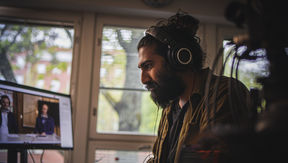
How did you end up in Aalto?
I hail from India, where I was working at an innovation center in Mumbai for about two years after finishing my undergraduate studies in design. I had already heard about Aalto during my study years. In 2016 I was selected to showcase my work in Dubai as a part of the Global Grad Show. I saw Aalto’s stand and work over there and was quite intrigued, especially in relation to environmentally conscious design and social justice.
In 2017 I applied to study Contemporary Design in the Master of Arts at Aalto and got a scholarship. I made the decision to move to Finland, and saw my life change completely. It was my first big departure from India, even though I’ve travelled a bit and done my exchange in Politecnico di Milano in Italy.
That leap was the turning point. I feel more at home here than in India. It’s mostly because Aalto is a multinational community. I was initially worried that the language and culture could be a barrier, but when I came to Aalto, I realized that there are so many people from so many diverse cultures, languages and countries that are synergistically and sympathetically working together. It was way more comforting than I could have expected. In India I felt like I was a bit of a misfit because I had so many interests in the global context. Aalto has a very global approach to teaching and design.
Deep down I knew I wanted to stay in Finland or Europe. After the first or second year of my studies I knew that my journey is not done yet, it is just beginning.
After I graduated, I started working as a researcher in Aalto Design Factory. I was involved with an interesting research project, working in the realm of industrial design for a smart city in collaboration with Nokia, Spinverse and a couple of other entities. I had always had my eyes on working at Aalto Design Factory, and the research project sort of grounded me in that space. After the project, in 2021, I joined the Design Factory as a staff member.
Of course, there are always new challenges that come our way and must be dealt with. In my first year I had to learn how to be comfortable in a completely foreign country and try to get my roots here. Aalto is great, but the sense of belonging in Helsinki and Finland takes time. And of course, there is a little bit of home sickness.

What helped you to get grounded?
Aalto’s student association activities went a long way in helping me. I was in fact a board member in the arts association called TOKYO. That was quite nice, and it gave me access to activities with like-minded people across the Aalto realm and even in Helsinki.
Most of the courses here are also linked to the industry and other real-world entities. This could be a design center, a museum, or a company. Their context also gives you a kind of purpose. You are working on things beyond a simple student assignment.
For example, back as a student I’ve worked on some really interesting glass experiments for Iittala and Fiskars. One of my faculty told me that I cannot mix glass and other materials, especially metals and organic materials, without compromising the glass itself. I took it as a material challenge and produced a variety of artefacts that explored this challenge with success. They were also exhibited at Iittala and Arabia Design Centre.
Can you share a concrete story about your work?
One of the major courses in Design Factory is called product development project, PDP. I’ve been involved with it for a long time, initially as a student myself, and then now as a part of the faculty. Last year we had one of the largest number of students ever on this course, altogether about 150, and they were all so excited and engaged.
PDP is a one-year long student project, where we link the students to industry sponsors. They give the students a brief and 10 000 euros to develop the ideas and turn them into real-world projects. Design Factory houses this entire process and provides expertise, guidance, and facilities to make it happen.
It was such an enjoyable experience to facilitate the students as one of the faculty members, and work with them in various departments. This year we had a whole bunch of art, design and engineering projects, from a portable VR flight simulator for SAAB to an interactive cave painting experience for Heureka’s museum.
Usually, these sponsors are long-term collaborators. In some cases, the students continue to work with the companies. This year one of them even hired the whole student team for the summer.
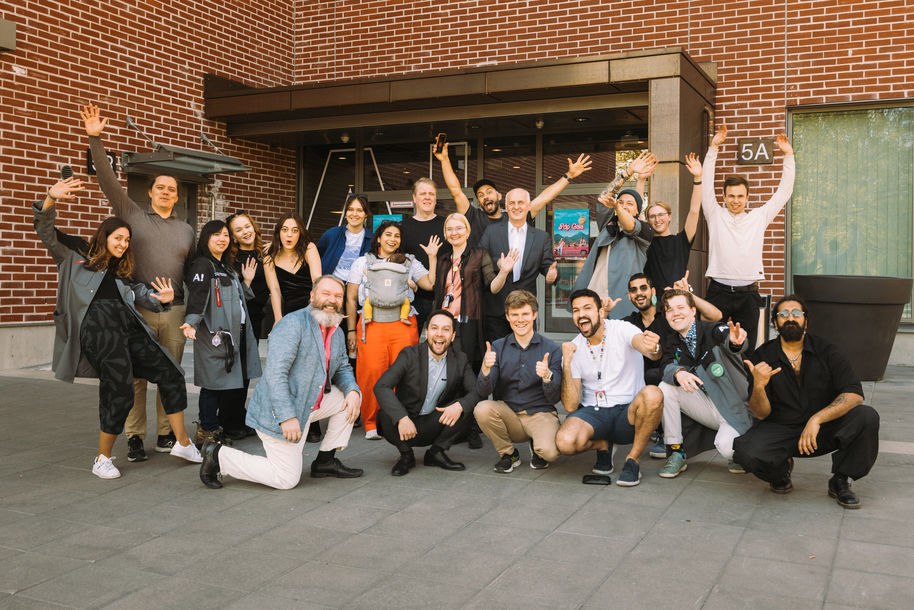
What is it like to walk in your shoes?
It is getting one's hands dirty with so many different things. I am typically helping students with realizing their projects. That could mean helping them with ideation and direction, prototyping, 3D printing, laser cutting, alongside digital productions like working with XR tools, filming and streaming.
I do a bit of teaching as well. I run two workshops for PDP. One of them is introducing students to what extended reality is all about. Another workshop is related to futuring and product development, and is inspired by the Future Frequencies workshop developed by the Sitra foundation. Here, the students come up with an array of ideas or scenarios for the future and explore what steps they need to take to achieve it. Additionally, I’m also running an Aalto summer school course called Nordic Product Design that explores the trajectories of design in the Nordic context.
What would be the most fascinating scenario for 2050?
I’m gonna think of this in the context of students. We will stray away from the classroom concept of teaching. I feel like in the future we will have a lot of peer-to-peer learning, because a lot of basic teaching gets quite automated in many ways, especially with all these leaps in AI. I believe we are leaving the age of creation and moving more towards an age of curation. The gap between a student and a teacher will most likely be reduced even more, and there will be a lot more cross-learning and learning through collaborative knowledge sharing. Teachers do harbor a certain amount of specialized knowledge, and they’ll likely find creative ways to get that to students. In 25 years, their value is more towards guiding students in the right direction.

What about the campus area in 2050, what would it look and feel like?
I think that the way the campus basis is being used changes quite dramatically. It already has. There’s going to be a stronger emphasis on places to come together, to interact and to hang out, rather than classroom spaces. Tools that we have are going to be far more specialized, whether it’s quantum based computing or stuff like that, and these are likely only accessible on the campus. But the spaces are going to be developed to promote student interaction and peer learning.
Human interaction will be a thing of value. It’s very easy to imagine screens and computers everywhere, and I feel like we already are at that stage right now. But in 2050, we will be likely be promoting human to human interaction. That will be seen as a luxury. It is now perhaps getting a bit sidelined, but it is irreplaceable.
I feel like Aalto is already on this trajectory to improve the spaces and different activities in connection to human meetings and connections, but there’s huge room for development in that context.
What do you do in your free time and why is it important to you?
I co-run an art collective in Helsinki called Nasha, and we have an art studio in Vallila together with five other artists and practitioners, some of which are Aalto alumni. It holds on to an important creative side of me that I don’t want to lose. Coming to Aalto University as a prospective contemporary designer and artist was a really exciting prospect. But as an immigrant, it becomes really tough to pursue a career in contemporary design and in artistic practice outside of the University, while also meeting the requirements for a residence permit. After graduating and starting my work at Aalto Design Factory, I finally had the necessary means to support my own art studio in my spare time.
Other than that, I’m a rock climber, and I enjoy bouldering and rock climbing both indoors and outdoors. Finland has a nice climbing community, and the sport is getting really popular. There are some nice crags out there, both in Helsinki and across the country. I try to go there during the weekends while the sun is out and its warm.
Walk in my shoes
Inspired by the saying that you should walk a mile in someone’s shoes to understand them, the ‘Walk in my shoes’ series aims to share some of the experiences, thoughts, perspectives and challenges faced by members of the Aalto community.
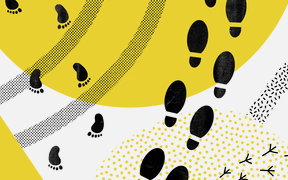
Read more news
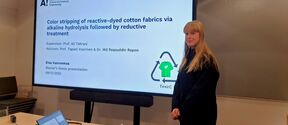
Master’s student showcases efficient color stripping of cotton fabrics
On December 9, master’s thesis student Elsa Vuorenmaa from the Textile Chemistry Group presented the results of her research on color stripping of reactive-dyed cotton fabrics.
Future makers research batteries, cryptography and plastic recycling
The Technology Industries of Finland Centennial Foundation awarded 3.5 million euros in research funding to eight projects, five from Aalto University.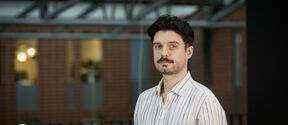
Sebastian Szyller: I want to make machine learning more dependable and resilient to attacks
Sebastian Szyller has been appointed assistant professor at Aalto University Department of Computer Science as from 1 September 2025. He studies how to train privacy-preserving machine learning models, how to safeguard them and ensure robust predictions in untrusted environments






